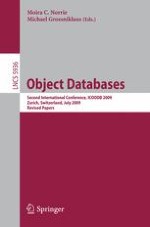2010 | Buch
Object Databases
Second International Conference, ICOODB 2009, Zurich, Switzerland, July 1-3, 2009. Revised Papers
herausgegeben von: Moira C. Norrie, Michael Grossniklaus
Verlag: Springer Berlin Heidelberg
Buchreihe : Lecture Notes in Computer Science
